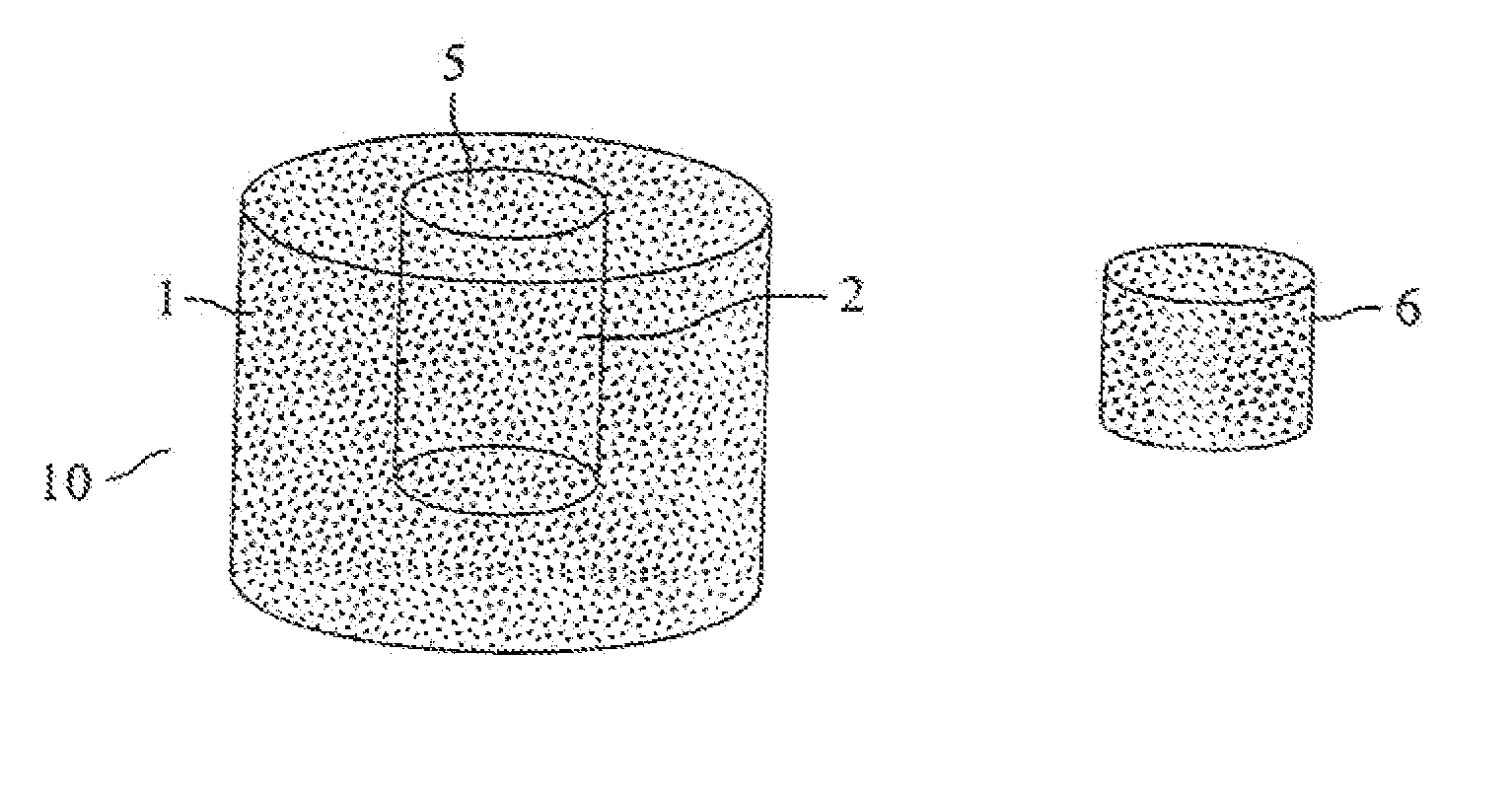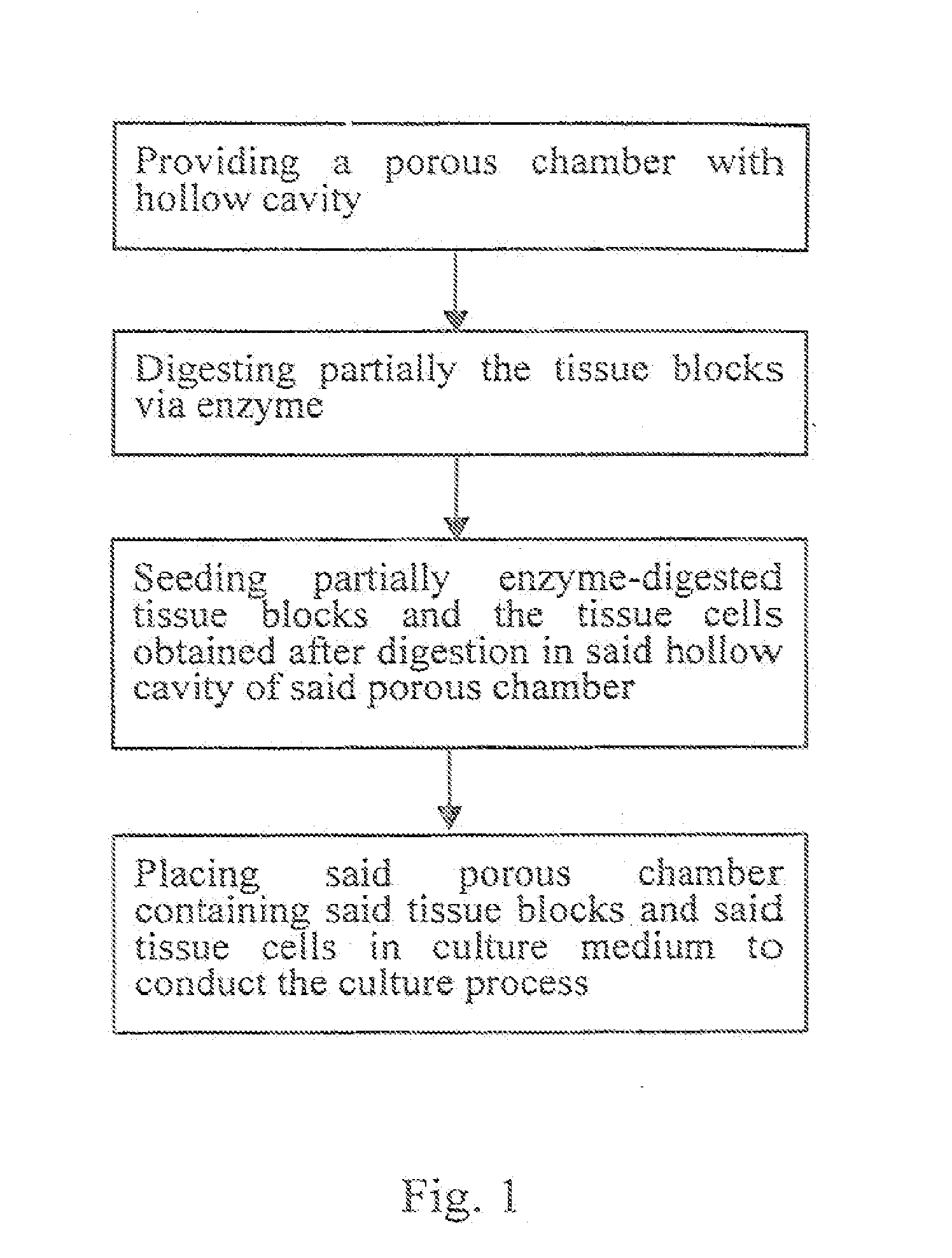Porous chamber for tissue culture in vitro
a tissue culture and porous chamber technology, applied in the field of tissue culture in vitro, can solve the problems of large burden on families and societies, loss of original forms and functions of cells, and difficulty in overcoming the problem of seeding of cells
- Summary
- Abstract
- Description
- Claims
- Application Information
AI Technical Summary
Benefits of technology
Problems solved by technology
Method used
Image
Examples
embodiments
[0025] The method for cartilage tissue culture in vitro:
[0026] 1. Preparing the Biologically Absorbable Porous Chamber 10 Having Bollow Cavity 2
[0027] The dissoluble polymer material chosen in this embodiment is the PLGApolymer prepared through ring scission polymerization (the molecular weight of polymer is approximately 200,000). By crushing the block-shaped PLGA polymer material in the crushing machine, the polymer particles with diameters ranging from 177 to 250 μm are to be obtained after sifting through the sifting net having 60 to 80 meshes. The water-soluble material chosen to add in the scaffold for creating the porous structure is sodium chloride particles with the diameters of approximately 250 μm; acetone is chosen to be the organic solvent used for dissolving polymer particles. The PLGA polymer particles and the sodium chloride particles, based on the weight ratio of 10 / 90, are to be well-proportionally mixed through way of spinning, following which the PLGA polymer pa...
PUM
 Login to View More
Login to View More Abstract
Description
Claims
Application Information
 Login to View More
Login to View More - R&D
- Intellectual Property
- Life Sciences
- Materials
- Tech Scout
- Unparalleled Data Quality
- Higher Quality Content
- 60% Fewer Hallucinations
Browse by: Latest US Patents, China's latest patents, Technical Efficacy Thesaurus, Application Domain, Technology Topic, Popular Technical Reports.
© 2025 PatSnap. All rights reserved.Legal|Privacy policy|Modern Slavery Act Transparency Statement|Sitemap|About US| Contact US: help@patsnap.com



